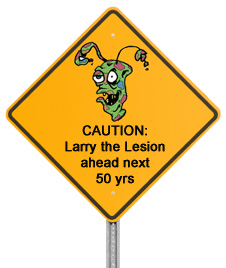"The researchers report clinical and MRI findings after a five-year follow-up in 30 patients with subclinical demyelinating lesions fulfilling Barkhof criteria seen on MRI performed for medical complaints such as headache or trauma.
All patients had a normal examination and biological screening, the authors report, but all patients had increased CSF immunoglobulin levels (including nine with oligoclonal bands) and eight patients had abnormal asymptomatic visual evoked potentials.
Eleven patients clinically converted, including five with optic neuritis, three with diplopia or internuclear ophthalmoplegia, two with paresthesias in the lower limbs, and one with cognitive deterioration.
Four of these patients had their first clinical events during the first year after the first abnormal MRI, three during the second year, three during the third year, and one at five years. The mean time between the abnormal MRI and the clinically isolated syndrome was 2.3 years.
All 17 patients who underwent a second MRI during the first year showed MRI dissemination, the researchers note, as did eight of 12 patients whose second MRI was done between 12 and 24 months.
"For the pre-MS patient, without clinical events but with evidence of dissemination to time and space, medical discussion on the therapeutic options of immunomodulatory agents for reducing the risk of MS should be conducted, with the knowledge that subclinical MS can evolve into relapsing remitting MS in the majority of cases or more rarely into progressive MS," the investigators advise.
"Physicians and especially neurologists must really know Barkhof and McDonald criteria to not overestimate the diagnosis of MS," Dr. Lebrun-Frenay said. "A lot of abnormal MRI with T hyperintensities are classified MS, but a lot of physicians forget what Barkhof and Tintoré said in their principal publications on the way to interpret brain MRI."


